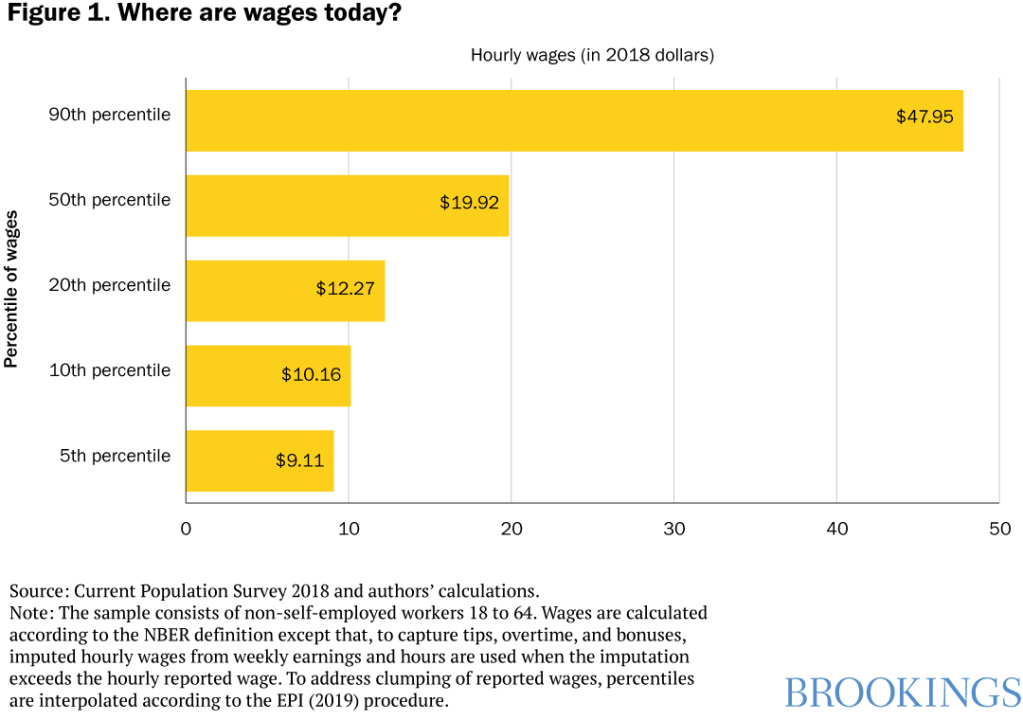In this week’s edition of Charts of the Week: three items on the stagnation in middle class income. For more research and analysis on this topic, visit the Future of the Middle Class Initiative.
Middle class income growth is lagging
The middle class has been falling behind in terms of the standard income measure over the last four decades. Isabel Sawhill and Christopher Pulliam write that “the top 20 percent has seen their income double” while “the bottom 20 percent has seen income growth of 84 percent, far outpacing the middle class.” They add that “government subsidies for health insurance make up a large portion of the bottom quintile’s income growth over the past 40 years.” If healthcare costs are excluded, middle class income growth decreases even more, from 47 percent to 32 percent.
Whose wages are rising and why?

The typical American worker has enjoyed little wage growth in the last 40 years. Ryan Nunn and Jay Shambaugh observe that “by any measure, wages at the middle have grown more slowly than at the top and more slowly than the economy overall.” The 90th percentile of workers is making almost $30 more per hour than those in the 50th percentile, and almost $40 more per hour than those in the 5th percentile. “Globalization, insufficient economic dynamism, the declining rate of private sector union membership, and other factors have contributed to weak wage growth for many Americans,” Nunn and Shambaugh say.
Middle class incomes HAVE NO PROSPECT OF CATCHING UP
Average income growth since 1979 has been slowest for those in the middle of the income distribution. “Incomes in the middle class have lagged since 1979,” write Richard Reeves and Christopher Pulliam, “growing half as fast as those in the bottom 20% and the top 81-99%.” Continuing, they add: “But there is no immediate prospect of income growth in the middle class catching up.”

Commentary
Charts of the Week: Middle class income and wages
January 24, 2020